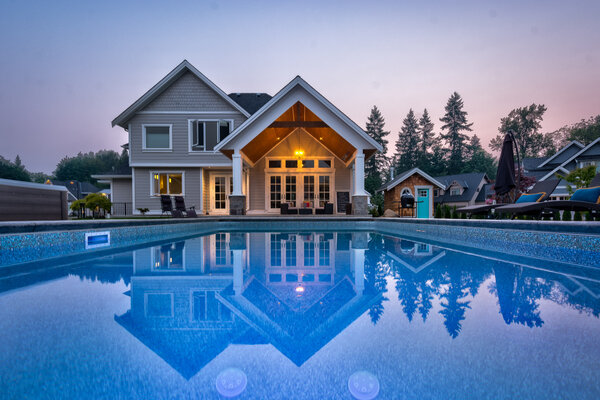The Trifecta to Clear Pool Water
May 23/2023
There is a simple key to having crystal clear pool water and it's not any magic solution. Having clean clear water is very much like a three-legged stool. The three legs are circulation, filtration, and water chemistry. If any one of these legs is missing, you can be sure the stool will fall over, resulting in cloudy or unsafe water.
Circulation basically refers to moving the water by means of the pump. While this sounds simple or obvious, there are a few factors to consider. It is important that there is enough circulation for the volume of water. If your pump is running on a timer or on an automation system with reduced circulation, it will need to be optimized to ensure the pump is running often enough. This will vary depending on the size of the pump, the volume of water and bather use. Although there are some calculations that can be made to determine the optimum hours to run your pump, it is often best to circulate your water 24/7 during peak season or when treating water clarity issues.
Something that can easily be overlooked is any blockages that would inhibit circulation. For example, if your skimmer basket is or strainer basket is plugged with leaves or debris, this can reduce the pump’s ability to circulate the water properly. Of, if the pump impeller is plugged with pine needles or small stones, it won't be able to pull an adequate amount of water to circulate properly.
Another tip related to circulation is checking that your return eyeballs (water jets) are pointed 45 degrees downward to help circulate all the water in the pool, not just the surface water. This will help avoid stagnant or dead spots in the pool and reduce the chances of algae growing on the surfaces of the pool.

Filtration is the next important key. Water is full of tiny microbes, algae, and other particles (cosmetics, lotions, skin and other unmentionables) that can all contribute to cloudy or foggy water. The filter's job is to collect this particulate from the pool. However, as the filter accumulates this dirt and waste it becomes harder for the pump to push through this layer of grime. If the filter is plugged up and can't collect anymore particulate, the water will begin to cloud. Cleaning your filter regularly will help it optimize its ability to perform properly. Cleaning may include backwashing sand filters or rinsing cartridge filters. Filter cleaning solutions (degreasing agents) can also help extend the life of the filter media and should be treated at least once per season (or after algae issues). A clean filter means a clean pool.
Finally, water chemistry is crucial to maintaining clear water. This means not only having enough sanitizer (chlorine of bromine), but also maintaining the rest of the chemistry parameters. Chlorine will help breakdown bacteria, algae and microorganisms so the filter can catch them. But there is more to it than just chlorine. High pH, alkalinity or calcium can contribute to cloudy water. High stabilizer (CYA) levels can cause chlorine lock and make your chlorine ineffective. We always recommend testing the pool water at least once per week using a home test kit and bringing a sample of the water to a pool professional for testing each month. A professional will be able to test all the parameters with greater accuracy.
The next time your pool is cloudy remember the three-legged stool. Check for proper circulation, filtration, and water chemistry. Sure enough, one or more of them will need some attention. For more swimming pool tips and tricks follow #leisurescapes on social media.
